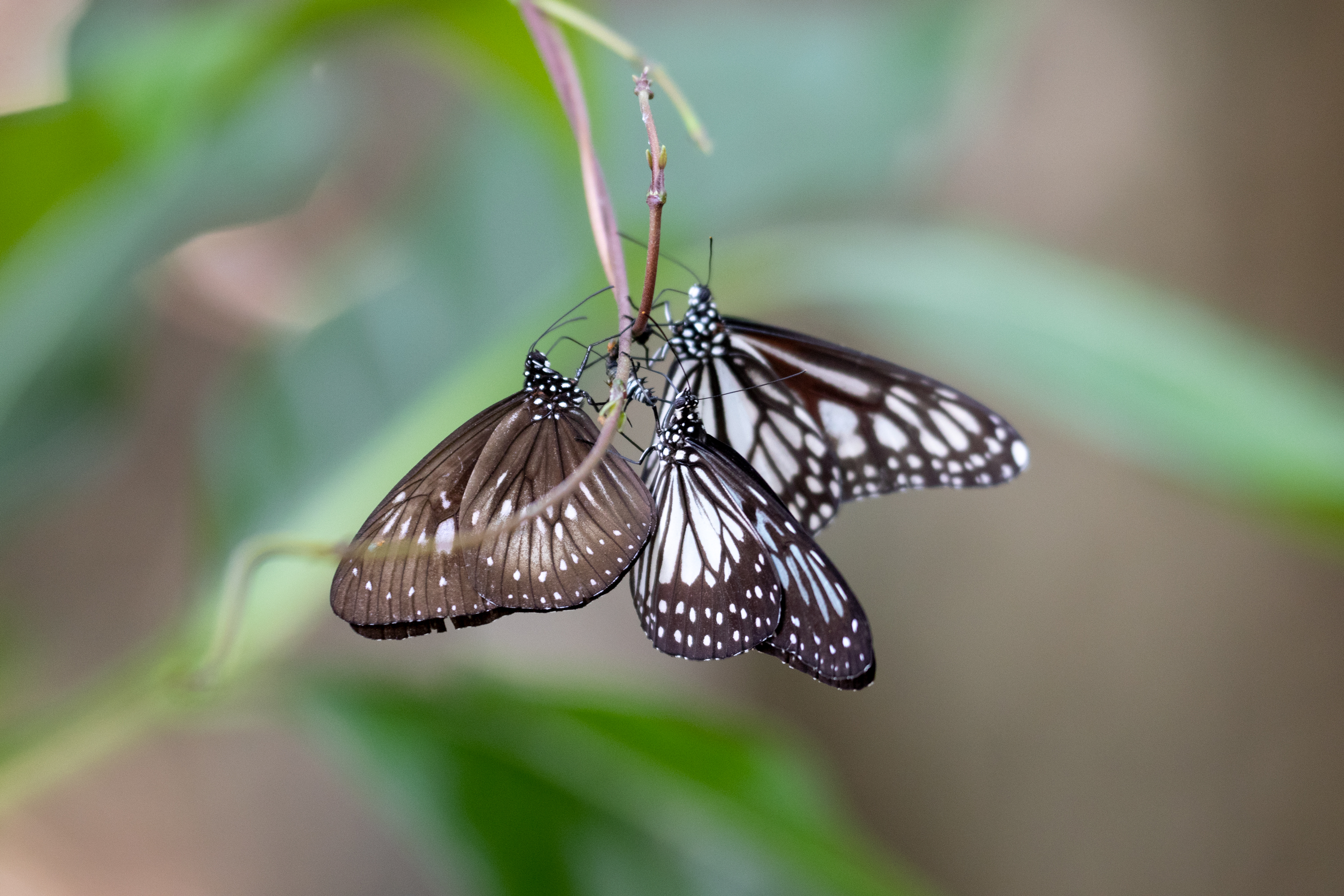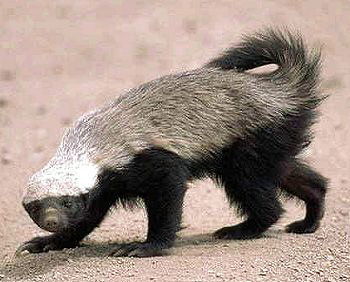|
Kleptopharmacophagy
Kleptopharmacophagy is a term used for describing the ecological relationship between two different organisms, where the first is stealing the second's chemical compounds and consuming them. This scientific term was proposed by Australian, Singaporean, and American biologists in September 2021 in an article that was published in the journal ''Ecology'' by the Ecological Society of America. The phenomenon was first noticed in milkweed butterflies that were attacking caterpillars and drinking their internal liquid, proposedly to obtain toxic alkaloids used for defense, as well as for mating purposes. Characteristics Kleptopharmacophagy is a generic term and a scientific neologism, that is used to describe the phenomenon of chemical theft between living organisms. This special type of behavior is something new for researchers, as it does not match the traditional descriptions of biological interaction. Kleptopharmacophagy cannot be defined simply with a use of classical ecological ... [...More Info...] [...Related Items...] OR: [Wikipedia] [Google] [Baidu] |
Ideopsis Vitrea Kleptopharmacophagy
''Ideopsis'' is a genus of nymphalid butterflies in the subfamily Danainae found in South-east Asia. Species Listed alphabetically: *''Ideopsis gaura'' (Horsfield, 829 – smaller wood nymph *''Ideopsis hewitsonii'' Kirsch, 1877 – Hewitson's small tree-nymph *''Ideopsis klassika'' Martin, 1909 – Seram small tree-nymph *''Ideopsis juventa'' (Cramer, 777 – wood nymph, gray or grey glassy tiger *''Ideopsis oberthurii'' (Doherty, 1891) *''Ideopsis similis'' (Linnaeus, 1758) – Ceylon blue glassy tiger *'' Ideopsis vitrea'' (Blanchard, 1853) – Blanchard's wood nymph Wisdom of Wildlife *'' |
Pheromone
A pheromone () is a secreted or excreted chemical factor that triggers a social response in members of the same species. Pheromones are chemicals capable of acting like hormones outside the body of the secreting individual, to affect the behavior of the receiving individuals. There are ''alarm signal, alarm pheromones'', ''food trail pheromones'', ''sex pheromones'', and many others that affect behavior or physiology. Pheromones are used by many organisms, from basic unicellular prokaryotes to complex multicellular eukaryotes. Their use among insects has been particularly well documented. In addition, some vertebrates, plants and ciliates communicate by using pheromones. The ecological functions and evolution of pheromones are a major topic of research in the field of chemical ecology. Background The portmanteau word "pheromone" was coined by Peter Karlson and Martin Lüscher in 1959, based on the Greek φερω ''pheroo'' ('I carry') and ὁρμων ''hormon'' ('stimulating'). P ... [...More Info...] [...Related Items...] OR: [Wikipedia] [Google] [Baidu] |
Pyrrolizidine Alkaloid
Pyrrolizidine alkaloids (PAs), sometimes referred to as necine bases, are a group of naturally occurring alkaloids based on the structure of pyrrolizidine. Pyrrolizidine alkaloids are produced by plants as a defense mechanism against insect herbivores. More than 660 PAs and PA N-oxides have been identified in over 6,000 plants, and about half of them exhibit hepatotoxicity. They are found frequently in plants in the Boraginaceae, Asteraceae, Orchidaceae and Fabaceae families; less frequently in the Convolvulaceae and Poaceae, and in at least one species in the Lamiaceae. It has been estimated that 3% of the world’s flowering plants contain pyrrolizidine alkaloids. Honey can contain pyrrolizidine alkaloids, as can grains, milk, offal and eggs. To date (2011), there is no international regulation of PAs in food, unlike those for herbs and medicines. Unsaturated pyrrolizidine alkaloids are hepatotoxic, that is, damaging to the liver. PAs also cause hepatic veno-occlusive disea ... [...More Info...] [...Related Items...] OR: [Wikipedia] [Google] [Baidu] |
Parantica Algeoides Necropharmacophagy
''Parantica'', commonly called tigers, is an Old World genus of butterflies in subfamily Danainae of family Nymphalidae. They are found in southeastern Asia, Indonesia, Papua-New Guinea, and the Philippines. Many of these species are endemic to islands and considered endangered, vulnerable, or threatened according to the IUCN Red List. For other butterflies called tigers see the genus ''Danaus''. Species Species in alphabetical order: http://www.funet.fi/pub/sci/bio/life/insecta/lepidoptera/ditrysia/papilionoidea/nymphalidae/danainae/parantica/index.html Parantica *''Parantica aglea'' (Stoll, 1782) – glassy (blue) tiger *''Parantica agleoides'' (C. & R. Felder, 1860) – dark glassy tiger *''Parantica albata'' (Zinken, 1831) – Zinken's tiger *''Parantica aspasia'' (Fabricius, 1787) – yellow glassy tiger *'' Parantica cleona'' (Stoll, 1782) *''Parantica clinias'' (Grose-Smith, 1890) – New Ireland yellow tiger *'' Parantica crowleyi'' (Jenner Weir, 1894) – Crowley's tige ... [...More Info...] [...Related Items...] OR: [Wikipedia] [Google] [Baidu] |
Ideopsis Blanchardii
''Ideopsis'' is a genus of nymphalid butterflies in the subfamily Danainae found in South-east Asia. Species Listed alphabetically: *''Ideopsis gaura'' (Horsfield, 829 – smaller wood nymph *''Ideopsis hewitsonii'' Kirsch, 1877 – Hewitson's small tree-nymph *''Ideopsis klassika'' Martin, 1909 – Seram small tree-nymph *''Ideopsis juventa'' (Cramer, 777 – wood nymph, gray or grey glassy tiger *''Ideopsis oberthurii'' (Doherty, 1891) *''Ideopsis similis'' (Linnaeus, 1758) – Ceylon blue glassy tiger *'' Ideopsis vitrea'' (Blanchard, 1853) – Blanchard's wood nymph Wisdom of Wildlife *'' |
Ideopsis Vitrea
''Ideopsis vitrea'', the Blanchard's wood nymph, is a butterfly of the family Nymphalidae. It is found on Sulawesi, the Moluccas and New Guinea New Guinea (; Hiri Motu Hiri Motu, also known as Police Motu, Pidgin Motu, or just Hiri, is a language of Papua New Guinea, which is spoken in surrounding areas of Port Moresby (Capital of Papua New Guinea). It is a simplified version of .... Subspecies *''Ideopsis vitrea vitrea'' (West Irian: Arfak Mountains) *''Ideopsis vitrea chloris'' (C. & R. Felder, 1860) (Morotai, Halmahera, Ternate, Bachan, Buru) *''Ideopsis vitrea obiana'' Fruhstorfer, 1910 (Obi) *''Ideopsis vitrea inuncta'' (Butler, 1865) (Gebe Island, Waigeu) *''Ideopsis vitrea onina'' Talbot, 1940 (West Irian: Onin Peninsula) *''Ideopsis vitrea serena'' Joicey & Talbot, 1916 (West Irian: Wandammen Mountains) *''Ideopsis vitrea oenopia'' (C. & R. Felder, 1859) (Sulawesi) *''Ideopsis vitrea arachosia'' Fruhstorfer, 1910 (southern Sulawesi) *''Ideopsis vitrea iza'' Fru ... [...More Info...] [...Related Items...] OR: [Wikipedia] [Google] [Baidu] |
Proboscis
A proboscis () is an elongated appendage from the head of an animal, either a vertebrate or an invertebrate. In invertebrates, the term usually refers to tubular mouthparts used for feeding and sucking. In vertebrates, a proboscis is an elongated nose or snout. Etymology First attested in English in 1609 from Latin , the latinisation of the Ancient Greek (), which comes from () 'forth, forward, before' + (), 'to feed, to nourish'. The plural as derived from the Greek is , but in English the plural form ''proboscises'' occurs frequently. Invertebrates The most common usage is to refer to the tubular feeding and sucking organ of certain invertebrates such as insects (e.g., moths, butterflies, and mosquitoes), worms (including Acanthocephala, proboscis worms) and gastropod molluscs. Acanthocephala The Acanthocephala or thorny-headed worms, or spiny-headed worms are characterized by the presence of an eversible proboscis, armed with spines, which it uses to pierce and ... [...More Info...] [...Related Items...] OR: [Wikipedia] [Google] [Baidu] |
Tarsal Claws
This glossary describes the terms used in formal descriptions of spiders; where applicable these terms are used in describing other arachnids. Links within the glossary are shown . Terms A Abdomen or opisthosoma: One of the two main body parts ( tagmata), located towards the posterior end; see also Abdomen § Other animals Accessory claw: Modified at the tip of the in web-building spiders; used with to grip strands of the web Anal tubercle: A small protuberance (tubercule) above the through which the anus opens Apodeme → Apophysis (plural apophyses): An outgrowth or process changing the general shape of a body part, particularly the appendages; often used in describing the male → Atrium (plural atria): An internal chamber at the entrance to the in female haplogyne spiders B Bidentate: Having two Book lungs: Respiratory organs on the ventral side (underside) of the , in front of the , opening through narrow slits; see also Book lungs Branchial operculum � ... [...More Info...] [...Related Items...] OR: [Wikipedia] [Google] [Baidu] |
Aposematism
Aposematism is the advertising by an animal to potential predators that it is not worth attacking or eating. This unprofitability may consist of any defences which make the prey difficult to kill and eat, such as toxicity, venom, foul taste or smell, sharp spines, or aggressive nature. These advertising signals may take the form of conspicuous coloration, sounds, odours, or other perceivable characteristics. Aposematic signals are beneficial for both predator and prey, since both avoid potential harm. The term was coined in 1877 by Edward Bagnall Poulton for Alfred Russel Wallace's concept of warning coloration. Aposematism is exploited in Müllerian mimicry, where species with strong defences evolve to resemble one another. By mimicking similarly coloured species, the warning signal to predators is shared, causing them to learn more quickly at less of a cost. A genuine aposematic signal that a species actually possesses chemical or physical defences is not the only way to ... [...More Info...] [...Related Items...] OR: [Wikipedia] [Google] [Baidu] |
Warning Colours
Aposematism is the advertising by an animal to potential predators that it is not worth attacking or eating. This unprofitability may consist of any defences which make the prey difficult to kill and eat, such as toxicity, venom, foul taste or smell, sharp spines, or aggressive nature. These advertising signals may take the form of conspicuous coloration, sounds, odours, or other perceivable characteristics. Aposematic signals are beneficial for both predator and prey, since both avoid potential harm. The term was coined in 1877 by Edward Bagnall Poulton for Alfred Russel Wallace's concept of warning coloration. Aposematism is exploited in Müllerian mimicry, where species with strong defences evolve to resemble one another. By mimicking similarly coloured species, the warning signal to predators is shared, causing them to learn more quickly at less of a cost. A genuine aposematic signal that a species actually possesses chemical or physical defences is not the only way to d ... [...More Info...] [...Related Items...] OR: [Wikipedia] [Google] [Baidu] |
Indonesia
Indonesia, officially the Republic of Indonesia, is a country in Southeast Asia and Oceania between the Indian and Pacific oceans. It consists of over 17,000 islands, including Sumatra, Java, Sulawesi, and parts of Borneo and New Guinea. Indonesia is the world's largest archipelagic state and the 14th-largest country by area, at . With over 275 million people, Indonesia is the world's fourth-most populous country and the most populous Muslim-majority country. Java, the world's most populous island, is home to more than half of the country's population. Indonesia is a presidential republic with an elected legislature. It has 38 provinces, of which nine have special status. The country's capital, Jakarta, is the world's second-most populous urban area. Indonesia shares land borders with Papua New Guinea, East Timor, and the eastern part of Malaysia, as well as maritime borders with Singapore, Vietnam, Thailand, the Philippines, Australia, Palau, and India ... [...More Info...] [...Related Items...] OR: [Wikipedia] [Google] [Baidu] |

_2.jpg)


